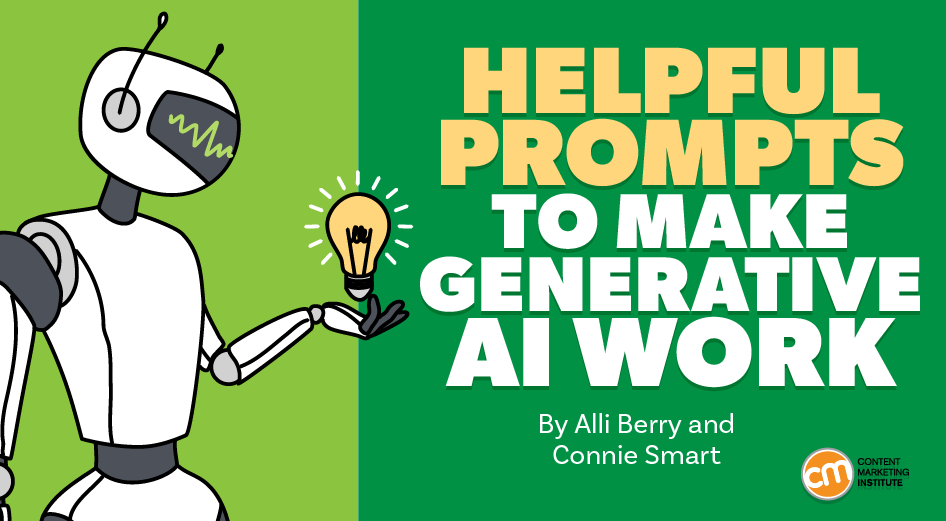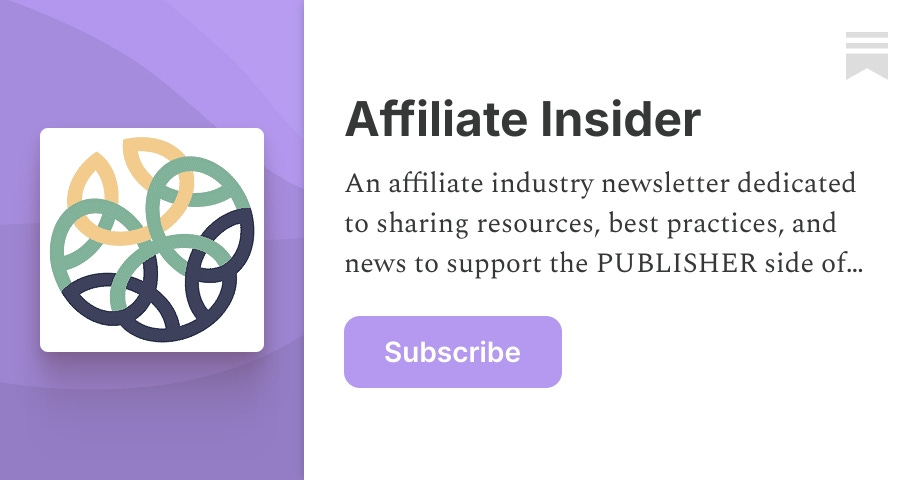- Content Forward: Thoughts from the Front Lines
- Posts
- Content Forward: How to Side Hustle Smarter
Content Forward: How to Side Hustle Smarter
The key to growth in 2024.

Hi, fellow content peeps!
Even though we are starting to slow down for the holiday season, I thought I’d share some of the things I’m thinking about with the start of the new year.
2023 has been a year of shifts in our industry. With so many Google updates and the whopping Helpful Content Update, the rules (for now) seem to have shifted.
These days, there are a lot of murmurs about the quality of the SERPs in Google. Who let all the spammers in? Google is asking for help to find these, but is that the answer?
I’m not sure what 2024 is going to look like in Google. We still have not seen any true recoveries from HCU to learn from either. Yes, some sites have seen growth since HCU, but that doesn’t mean that they have recovered; that was probably due to the last couple of updates.
I think the writing is on the wall. We need to figure out some new, additional playbooks (other than SEO) to grow this year.
I’ve talked a bit about our plans after the HCU and what we’re doing, but today, I want to talk about the thought process I go through when deciding to try new things or start some new side hustle projects.
First, an ad from our sponsor. If you’ve been struggling to find the right writer or editor for your content scaling projects, you might want to try Content Teams. We’ve hired hundreds of content people and know how to find the right people to deliver.
Fire Bullets, Then Cannonballs (A Jim Collins Classic)
We have internalized this concept in the digital walls of Venture 4th Media, so much so that it’s in our company handbook. Here’s a section:
If you hang around here long enough, we'll probably mention something about "fire bullets, then cannonballs" -- what does this mean?
Bullets, then cannonballs, is our approach to almost everything we do here. We [borrowed this analogy from Jim Collins]and have seriously internalized it in everything we do.
According to author Jim Collins, 'bullets, then cannonballs' refers to an approach of first trying out small experiments ('bullets') to test for success, then rapidly scaling up ('cannonballs') the winning efforts. For example, when launching a new product or initiative, a company might first launch a limited pilot to a select customer base.
If the pilot succeeds, the company can quickly roll out the product or initiative to a much wider audience. This minimizes risk by verifying success on a small scale first but then maximizes impact through swift, large-scale implementation of the winning approaches.
We do this for EVERYTHING — we test on a small project or initiative, then wait to gather data and see if we see daylight. If something works and we see ROI, we can go all in.
I love this concept, and it applies to many things in our businesses and careers. If we’re talking about side hustles today, this is a great core concept to keep in mind. This allows us to test our new ideas out in the real world first before we go all in.
But first, we have to prioritize the bullets we fire, but Amy, how the heck can we do that?
How to Decide What Side Hustles to Do or Bullets to Fire

Embarking on the journey of side hustles requires more than just passion; it's about making smart choices.
Here are a few key tips to guide you in deciding which ventures to embark on:
Leverage things you are already good at!
This might sound like such obvious advice, but I still have to remind myself of this from time to time. It’s easier than ever to start a new side hustle; there are so many things we can test out.
This is where you start narrowing all those great ideas down. Not everyone needs to build the next amazing AI tool or create a YouTube channel. Think about the things you are good at, those projects that light up your soul.
If you have a team, ask them! What do they love doing? What are they good at? If we don’t have the talent for a new project, it might get pushed back.
This is the starting point.
Read the room! The best ideas come from those you are already serving.
The best ideas come from your audience. The creators I see who are just killing it in their side projects this year are the ones who created projects or offers that solved a problem for their audience.
If you are a freelancer or agency owner, your audience is your clients. Get to know them inside and out. Is there anything else you can offer them?
If you will need to market your side hustle, I like to think about what the landing page and story will be at this phase as well. Why are you doing this? What’s the story behind it? How are you helping someone?
Can this be added to our day-to-day operations?
Starting something new doesn’t mean you have to reinvent the wheel. Look at what you are already doing before you test something new. Yes, you might need to learn a new tool or add some new SOPs to your operational manuals, but the question here should be — can we easily do this?
This also helps ensure that we have the resources to at least get a good start on a new project as well. I also like to see if we have someone that can take the lead on this. A project should always have someone that is leading the charge. If not, it can easily get lost in the shuffle of all the other things happening.
Does it support other parts of the business?
As a smaller, scrappy team, we don’t usually have the luxury of diving into brand-new territory without asking this question. We can do many things, but the best next project to start should support things we’re already doing.
I learned this the hard way as an agency owner. There was a time when I took any and all clients to keep going, and I didn’t give a moment’s thought to how this could either help me grow or stall me. I would often say ‘yes’ to something and then figure out how to do it. I wrote books, created landing pages, restructured sites, and took on writing projects. I was all over the place!
If you can create synergies in your business, you already give yourself an advantage. This was a big reason we decided to start Content Teams, our side hustle business. We were already doing this for ourselves, and it just made sense that we could continue our efforts and help someone! Because of this, we’ve hired some amazing, talented folks we may not have found otherwise.
Can I start making money right away?

In the content space and as creatives, we can get so wrapped up in our ideas in creating something that we forget that we need to make money.
As a freelancer, even before I thought of myself as a business owner, I knew one thing — I needed to make money, and I needed to make money quickly. This is probably the number one lesson I hold dear from my freelancing days. I didn’t do anything that didn’t lead to the money, and I still don’t have that luxury, which is good.
Today, when we start any new side project or new test, I keep this in mind. If we can monetize quickly, even better. Without the money, we have a side hobby project.
How will we continue to monetize this project?
This is a tough one. But all roads must lead to monetization in business and continue to make money for the business as time goes on. What do we actually make vs. potential? Are there other things we’re not doing to start this?
For every side hustle or new project you are saying yes to, you are also saying no to something else. We can’t do all the things in life and business. Choose things that you can continue to monetize and grow!
While it's crucial to focus on projects with the potential for monetization and growth, it's equally important to remember that not all guidance will suit every situation. This leads us to a fundamental piece of wisdom:
Don’t just load up on advice. Put it into the real world to see if it sticks.
I know this might sound like strange advice, as I’m here every week sharing my journey, and advice, but I’ve seen this too often.
We have a great new idea for something in our business or want to start a new side hustle.
We get all jazzed about the possibilities — money we can make, people we help, and we want this thing to grow. The quicker, the better.
So, we are like little sponges. We want all the tactics, and we want them now.
We buy books. Listen to podcasts. Read newsletters—all the good things.
But, as with anything in business, we don’t know if something will work until we put it into the market and try it ourselves.
Just because someone else is killing it doesn’t mean we can see the same results.
So, as you are testing and trying out new things or thinking about side hustle expansion, know this: you’ll never really know if it will work until you try.
Final Thoughts on Side Hustles: The Sunk Cost Fallacy Reminder

After you’ve tested a new idea, maybe even after you’ve gotten some traction, it’s a good time to evaluate and ask: How’s that working for ya?
I am a pretty committed person. Sometimes, to a fault. I’ve hung onto projects and partnerships way past due, and I’m here to tell the tale.
This is a good reminder if you haven’t heard about the sunk/cost fallacy.
What is the sunk cost fallacy?
The sunk cost fallacy is a cognitive bias that occurs when people continue (way past good) a venture or project due to a significant amount of resources (like time, money, or effort) they have already invested, regardless of the current and future costs or benefits.
This fallacy leads individuals to make irrational decisions based on past costs that cannot be recovered rather than evaluating a situation based on its current and future merits.
The more time, money, and resources you’ve poured into something, the harder it is to let it go. This leads us to keep going and pouring more money after bad ‘hoping’ that we’ll hit paydirt.
I’ve seen this happen so many times when it comes to side projects and in business in general.
You have to know when to hold them, know when to fold them, folks.
In the context of side hustles and new business projects, understanding the sunk cost fallacy is crucial for several reasons:
Better Overall Decision-Making — We need to take a good, hard look at what’s working and what’s not and not make decisions based solely on what we’ve already invested. The months and years can tick by quickly!
Resource Allocation — This includes our energy as well! Remember, when we say yes to something, we say no to something else!
Projects, Businesses, and Side Hustles are Not Our Children — Get emotionally attached to your family, to what matters in life, not to anything in our businesses. If we are too emotionally attached to something, it’s hard to make rational decisions and know when to exit. Everyone has failures, but we can only learn from the failures that we survive.
There’s No Shame in the Pivot — We will all have to pivot at some point. Business trends change—competition changes. If we can’t let go, we won’t be able to adapt when needed.
Evaluating and pivoting are integral parts of the journey. It's important to regularly assess your projects and be ready to make hard decisions. Remember, there's no glory in holding on to something that's not working. The sunk cost fallacy can be a tough pill to swallow, but it’s necessary.
Understanding when to hold on and when to fold can make all the difference in your business and side hustles. Be guided by your current and future potential, not what you've already invested. This mindset can save you time and energy that could be better spent on more promising ventures.
As we step into another year, let’s keep our minds open, our strategies flexible, and our goals aligned with the ever-changing landscape of our industry.
Things to Read, Watch, and Ponder
Need some new SEO Christmas jokes? I’m not sure if family members will get any of these, but at least you’ll give yourself a chuckle.
Want to get some practice on your AI/content creator skills? Here are some tips from our friends at Content Marketing Institute.
The SERPs are a literal mess these days. Let’s hope Google gets this sorted.
Okay, I am still hoping to come back next week, but first, we rest. I am looking forward to a few down days with my family.
I hope you all have a great holiday season!
Cheers! Amy
If you want to get into the weeds on these topics, here are a couple of newsletters to subscribe to.









Reply